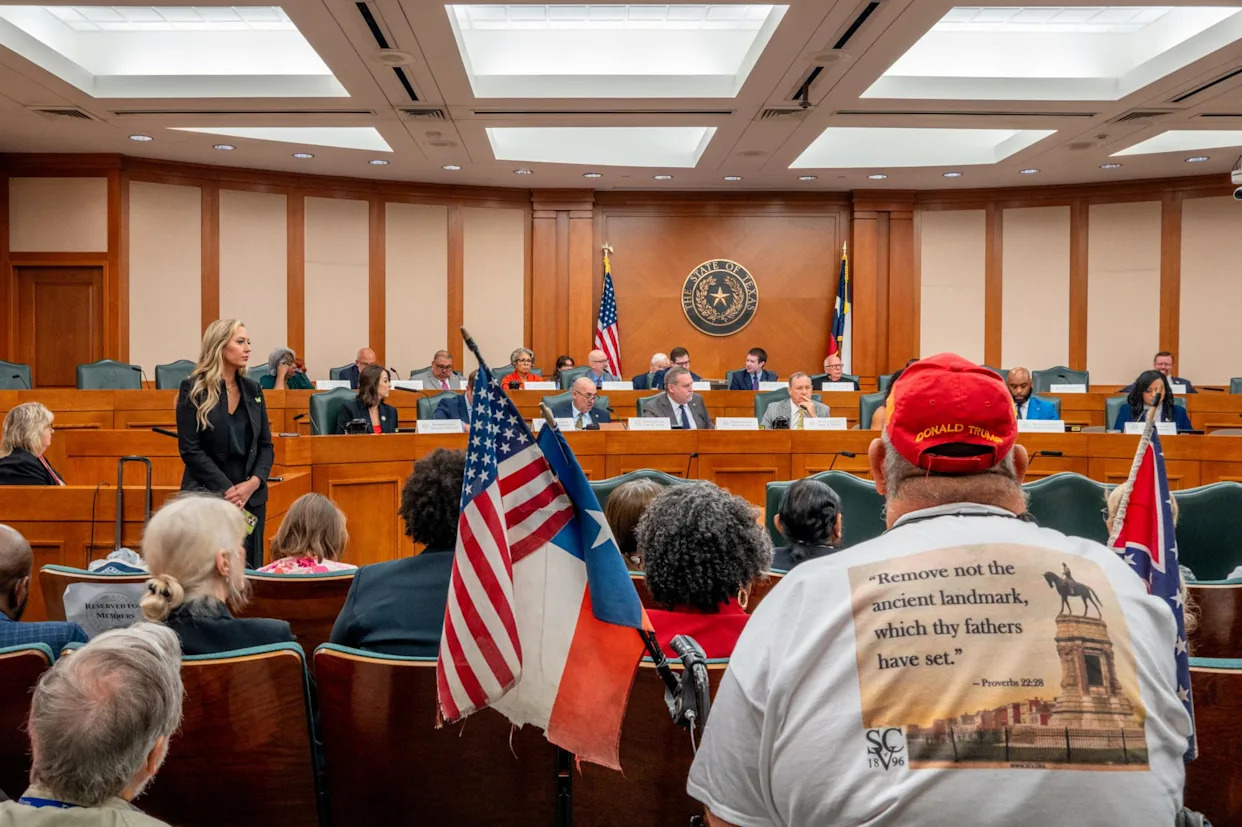
At the insistence of Donald Trump, Republicans in Texas are pushing ahead with an effort to redraw their congressional map to pick up as many as five additional Republican seats.
The decision has set off a cascading legal battle. State lawmakers have fled Texas as part of an effort to stop Republicans from passing the map. Democrats in other states have said they will retaliate, setting the stage for a nasty and prolonged redistricting tit-for-tat that could last for years.
What is redistricting?
After a nationwide census every 10 years, all 50 US states are required to redraw their congressional districts to account for population shifts. The US constitution entrusts the power to draw congressional lines to the state legislatures in each state. Since the 18th century, politicians have tried to use this line drawing power to punish their political rivals. In the 19th century, the practice of manipulating district lines for political lines became known as gerrymandering.
While states are required to redistrict every 10 years, the constitution contains no explicit ban on redrawing boundaries before the decade is up.
Why is Texas redistricting now?
Republicans currently hold an extremely slim 219-212 majority in the US House (there are four vacancies, three of which are seats previously held by Democrats). Republicans know they will probably lose seats in next year’s mid-term elections, when all members of the US House will stand for re-election and the sitting president’s party typically does not perform well.
Republicans have complete control of state government in Texas, which has 38 US House seats (second only to California’s 52 seats). Republicans currently hold 25 of those seats. Seeking to shore up the Republican advantage in the US House, Trump urged the Texas governor Greg Abbott to redraw the state’s lines to add additional Republican-friendly districts.
Abbott called a special session to draw the districts last month. Last week, Republicans unveiled a map in which they could pick up five additional seats, giving them a 30-8 advantage in the state’s delegation.
Is this legal?
Texas also undertook a mid-decade redistricting in 2003. In 2006, the US supreme court said that nothing in the US constitution prohibited Texas from redrawing its district mid-decade.
The US supreme court has also given states virtually unlimited leeway to gerrymander districts for partisan gain. In a 5-4 decision in 2019, it said that federal courts could not do anything to stop the drawing of districts for partisan advantage, no matter how severe.
There are still legal protections that prohibit states from diluting the influence of minority voters when they draw districts or explicitly sorting them based on their race. But the supreme court has made those cases extremely difficult to win and they can take years to resolve in court.
Why did Texas Democrats flee the state?
Democrats are in the minority in the Texas state legislature. But the body’s bylaws require the presence of two-thirds of its lawmakers to conduct business. There are 150 members of the Texas house of representatives, 62 of whom are Democrats. More than 51 fled the state on Sunday to Illinois, Massachusetts and New York to deny that quorum, halting the legislature from moving forward on the maps.
This isn’t the first time Democrats have fled the state to break quorum to try to stop Republicans from passing legislation. In 2021, Democrats fled to Washington DC as Republicans were poised to pass sweeping new voting restrictions. That standoff lasted several weeks, but Democrats eventually returned to the state and the legislation passed. Democrats also fled the state in 2003 to try and stop mid-decade redistricting.
Can Republicans force Democrats to return to Texas?
The Texas house voted on Monday to authorize arrest warrants for the members who fled the state. Such warrants are unlikely to be enforced while the members are out of the state.
Abbott and the Texas attorney general Ken Paxton have pledged to aggressively pursue the Democrats. Abbott has cited a 2021 non-binding opinion from Paxton’s office to suggest that the lawmakers who broke quorum could be removed from office. But such an extraordinary action would need to go through the Texas courts and would likely be tied up in state court for some time.
Rules enacted by the House in 2023 subject state lawmakers to a $500 daily fine for each day they are absent. Lawmakers are paid about $600 a month. While the rules prohibit lawmakers from using campaign funds to pay the fines, there are loopholes Democrats can use to have someone else cover them. The current special legislative session runs through 19 August but Abbott can continue to call more sessions, and it’s unclear how long Democrats are willing to wait out returning.
How are Democrats outside of Texas responding?
As Texas has moved ahead with its effort to implement a new map, Democrats have threatened to retaliate by redrawing districts in states where they have complete control.
Most notably, California Governor Gavin Newsom is leading an effort to redraw California’s 52 districts to drastically reduce the number of Republican seats (Democrats already hold 43 seats). Democratic governors in Illinois and New York have also pledged to retaliate.
Democrats face significant legal obstacles to achieving this goal. In California, voters approved a referendum in 2010 that strips lawmakers of their redistricting power and instead hands it to a bipartisan and independent citizens commission. Newsom and California Democrats are reportedly moving ahead with a plan to have voters approve a new map through a referendum this fall. In New York, the state constitution bars mid-decade redistricting absent a court order, but Democrats are reportedly considering putting a constitutional amendment on the ballot that would allow them to redistrict later in the decade. “I’m tired of fighting this fight with my hand tied behind my back,” Kathy Hochul, the governor of New York, said on Wednesday.
Will other Republican states redraw their maps?
Trump is reportedly urging Republicans in Missouri to redraw their congressional map to pick up an additional GOP seat. Ron DeSantis, the Florida governor, has also suggested that his state, where Republicans hold 20 of 28 seats, should redraw districts, which would likely lead to additional GOP gains.
Ohio, where Republicans hold 10 of 15 seats, is required to redraw its map this year because of a unique state law. That is likely to also lead to additional Republican seats.






Comments